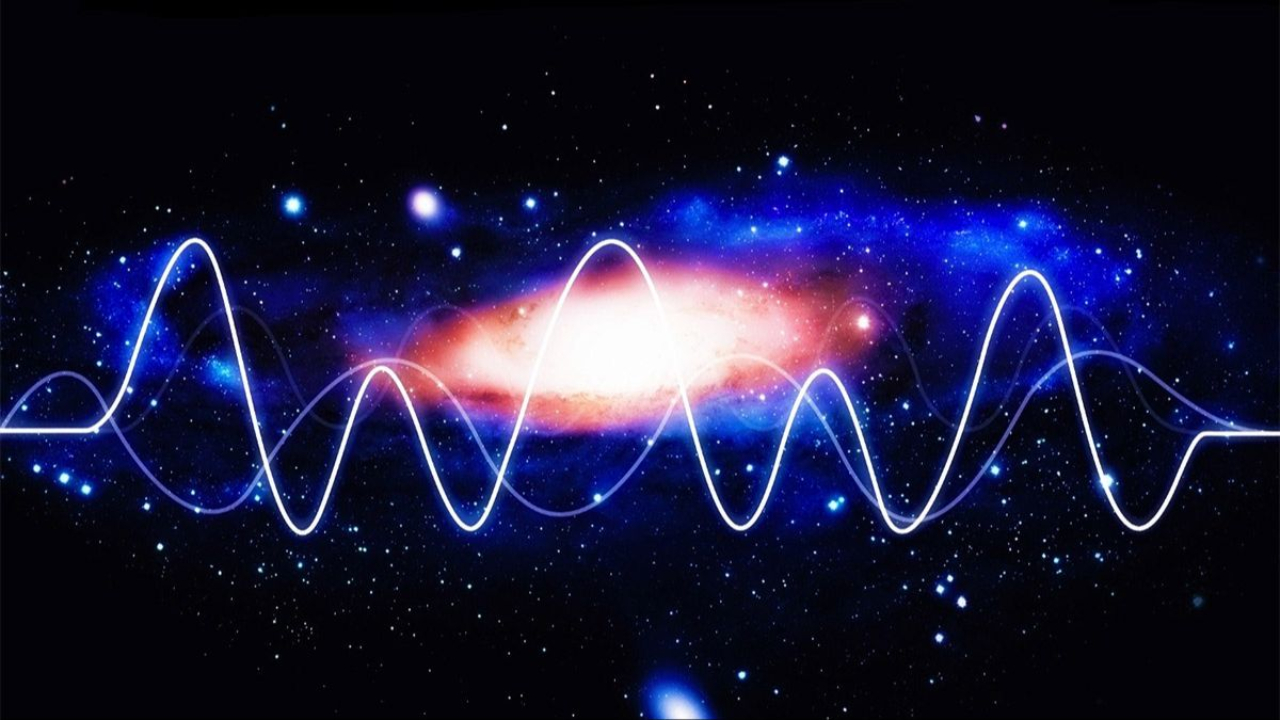Science News
& Faculty Articles
Molecular-level Intelligence Evidenced by Discovery of Extensive Adaptive RNA Editing in Octopus Transcriptome

Alienesque cephalopods just got even more interesting: scientists have found that octopuses can recode their transcriptome to optimize neuronal function under differing environmental conditions.
By: William Brown, scientist at the Resonance Science Foundation
This article has an accompanying video review:
The Physics of Intelligence
A significant achievement of science over the past few hundred years has been in removing supernatural and magical explanations of natural phenomena and inculcating within the modern mind the ability to conceptualize natural phenomena as fully mechanical processes. This has enabled us to understand myriad natural phenomena with mathematical precision. From this progress, it is now the predominant and conventional perspective to view all processes as fundamentally mechanistic. This has an interesting ramification on the subject of natural intelligence, as in the canon of conventional scientific theory, there is no innate intelligence within...
What Distinguishes Abiotic Matter from Living Matter?

There is a new research paper published (preprint only) by the Resonance Science Foundation Research Team. In this publication a key characteristic that distinguishes a living system from abiotic matter is discussed, and is identified as the primary criterion by which any arrangement of space-matter-energy can be unambiguously defined as alive. In addition to elucidating the nature of living systems, and what it means for an organization of matter and energy to be alive, the criterion serves as a methodology to unambiguously and positively identify a system as (1) alive, and (2) as conscious. In regards to the latter (2), the methodology outlined in the study is a significant advancement over the Turing test, which does not distinguish a programmed automaton from a system with true stand-alone volition and consciousness, and hence is a substandard method to identify a system as conscious.
By: William Brown, scientist at the Resonance Science Foundation
What is life?...
Non-Abelian Anyons: Pioneering the Future of Quantum Computers

Image Credit: Shutterstock
By Amal Pushp, Affiliate Physicist at the Resonance Science Foundation
Fault tolerance is the ability of a system to continue operating during the advent of errors that lead to a fault in one or more components of the system. In a previous RSF article, I discussed quantum cat states and how they help in the realization of fault-tolerant quantum computers. In this article, we will look at another aspect that helps achieve somewhat a similar goal, i.e., making a quantum system less prone to errors. We’ll be talking about non-Abelian anyons or simply non-abelions that essentially advance this idea.
Anyons are generally defined as quasiparticles existing in 2D systems, with properties distinct from both fermions and bosons, the two statistical classes of particles we know of based on quantum mechanics. They were first proposed and named by Nobel laureate Franck Wilczek who seemed to be unconvinced with the notion that there...
Is JWST Confirming Haramein’s Holographic Solution Predicting that the Universe is a Black Hole?

Recent observations of the JWST challenge the Big Bang origin of our universe, in support of Haramein's Holographic framework where the Universe was created by a black hole embedded in a larger universe. Most of our mainstream astronomy and astrophysics may have to be rewritten!
By Dr. Inés Urdaneta, Physicist at Resonance Science Foundation
In our RSF series concerning the Vacuum Catastrophe problem -the 122 order of magnitude discrepancy between the vacuum energy density at cosmological scale and quantum scale- and the solution provided by the generalized holographic approach [1], we remarked that this solution to the vacuum catastrophe hinted into a very intriguing scenario … that our Universe fulfills the condition of a Black hole once you correctly calculate the contribution of the vacuum fluctuations that dark mass and dark energy account for.
This theoretical prediction might now-a-days be validated with the current observations of the James Webb Space...
Galactic Filaments Trace out Spacememory Network Around Sagittarius A*

By: William Brown, scientist at the Resonance Science Foundation
Recent observations of thermal molecular filaments aligned radially and horizontally in the galactic plane and emanating from the central supermassive black hole— Sagittarius A*— reveal the underlying hydrodynamic ordering structure of the spacememory network and the relationship geometry of the spacememory architecture to the black hole magnetohydrodynamics at the Galactic Nucleus.
Hundreds of strange filaments twist through the Galaxy’s center
The center of our galaxy is full of myriad radially ordered twisted filaments of hot plasma, which may have formed due to an extensive collimated outflow of energy from Sagittarius A* along the galactic plane. New work has revealed in exquisite detail many of the characteristics of this newly discovered population of Galactic Center Filaments, although many intriguing questions remain about their formation and ordered alignment.

Two populations of...
Parity Symmetry, Broken Symmetries and their Physical Significance

Image credit: Shutterstock
By Amal Pushp, Affiliate Physicist at the Resonance Science Foundation
The mathematical property named “symmetry” manifests itself essentially at all scales in nature. From the petals of flowers down to the domain of atoms and molecules, symmetry plays a crucial role in shaping the structure of matter and unveiling the nature of physical reality. The definition of symmetry can change depending on the situation for example, the geometry of an object and its invariance under certain rotations or reflections might give a general mathematical idea of its symmetry but in physics, symmetry specifically concerns a change in a particular physical process or interaction. A physical process is said to be symmetric with respect to a change if it remains invariant despite the induced change.
There exist several types of symmetry in nature, and when it comes to particle physics, we are primarily...
Microtubule-Actin Network Within Neuron Regulates the Precise Timing of Electrical Signals via Electromagnetic Vortices

By: William Brown, scientist at the Resonance Science Foundation
The brain is a fractal massively parallel processor generating complex spatiotemporal electromagnetic field patterns that correlate with cognition and perception. A key property of a fractal system is scale-free complexity, which means that the degree of complexity of the system is invariant under scaling— for example, using a power-law quantification, it can be shown that the degree of complexity within the human brain is approximately invariant from the tissue, to the cellular, to the molecular levels. The electrical field potentials and magnetic resonance responses of the brain all exhibit scale-free dynamics [1], and these scale-invariant brain dynamics contain complex spatiotemporal structures that are modulated by task performance. Previous studies have shown that scale-free temporal correlations connect the vibrational modes of single neurons to the fractal-antenna-like biopolymers (dielectric...
Physicists Link a New Quantum Property with the Emergence of Spacetime

By Amal Pushp, Affiliate Physicist at the Resonance Science Foundation
The origin of spacetime is one of the most intriguing questions of the fundamentals of physics. This is one of the many questions that has essentially troubled scientists for centuries. Modern-day theorists have come up with several frameworks that have tried to approximate the main conditions that led to the emergence of spacetime. Some of these theories are emergent gravity, causal set theory, information theory, and multiple models within the enterprise of quantum gravity.
Physicists have been pondering for long that space and time are essentially derived properties from something more concrete, however, it is still not very clear as to what that more fundamental thing might be. There are several pieces of evidence in the scientific literature that apparently hint towards the non-fundamentality of spacetime. Essentially with the gauge-gravity duality proposal, theories of spacetime emergence...
Why is Energy Transfer in Photosynthesis So Efficient?

Numerical simulations have found that excitons can become a BEC -Bose Einstein Condensate- and this mechanism would explain the high efficiency of energy transport in photosynthesis of plants. The exciton-condensate mechanism could be harnessed to enhance energy transfer in synthetic systems.
By Dr. Inés Urdaneta, Physicist at Resonance Science Foundation
Photosynthesis is an extremely efficient biological process in plants, algae, and some types of bacteria, that utilizes light energy and carbon dioxide (CO2) to produce oxygen (O2) and chemical energy stored in glucose (a sugar).
Numerical simulations are showing that Bose Einstein condensates may be the key for such a high efficiency, and this phenomenon challenges what modern physics defines as possible regarding fundamental mechanisms in biological systems as it implies a quantum process that is not expected to happen at room temperature and in disordered (noisy) conditions that potentially degrade any quantum...
The Role of Fundamental Constants, Fine Tuning and the Anthropic Principle in the Evolution of Our Universe

Credit: NASA / CXC / M.Weiss
By Amal Pushp, Affiliate Physicist at the Resonance Science Foundation
Since the epochal event of the big bang, several physical parameters have been responsible for the evolution of the universe and for keeping it sustainable for various life forms as we know it. In this article we will discuss three such parameters or principles starting with the fundamental or coupling constants. A fundamental constant is an important part of any physical law. Some of the famous fundamental constants of interest to physicists include but are not restricted to the speed of light, the gravitational constant, Planck’s constant, the fine-structure constant, and many more. For more information, look at the table below that gives a non-exhaustive list of fundamental constants.
Another topic of relevance and our second principle in the title is the concept of fine-tuning according to which even a slight deviation between the values of physical observables...



